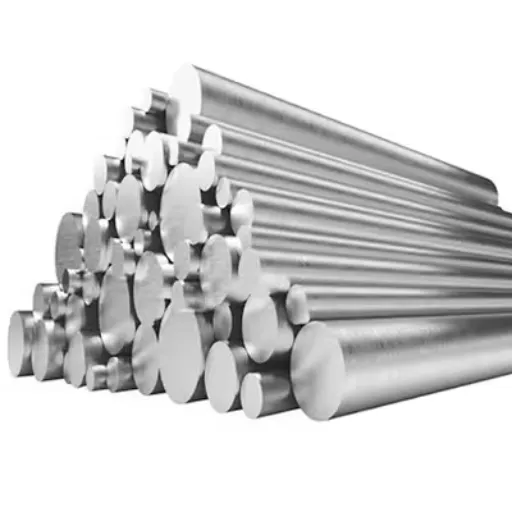Owing to its fusion, stainless steel jewelry is not prone to tarnish. Combine iron, chromium, nickel, and a few other metals, and you have stainless steel. The chromium has an oxide covering that prevents rust, corrosion, and stain. That said, exposure to aggressive agents like chemicals, saltwater, or humidity can steadily cause damage to the protective layer, resulting in the deterioration of the jewelry. One can protect the rare shine and durability of stainless steel by regular cleaning and avoiding extended exposure to such factors.
Does stainless steel fade?
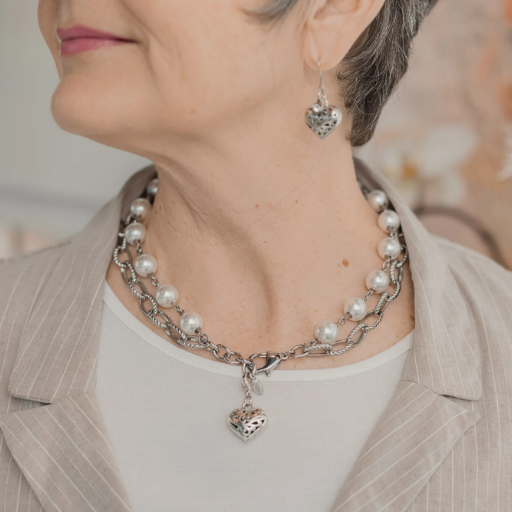
The chromium oxide layer and stainless steel’s robust composition help it maintain its shine and protect it from rust and other forms of corrosion. Nonetheless, exposure to salt water, chemicals, or excessive humidity can dull its shine over time. In my experience, stainless steel looks and saves luster if care and routine maintenance are performed, especially cleaning and limiting contact with harsh substances.
What Causes Stainless Steel Tarnish?
With the popularity of stainless steel jewelry and accessories, many competitors have also emerged due to its affordability and modern appeal. Most jewelry enthusiasts share the same concern: does it fade with time? While this post will discuss the composition of stainless steel and why it is resistant to tarnish, it will also tie in other metals used in jewelry making. Moreover, we will provide tried and tested methods to maintain the shine and dazzle of stainless steel jewelry so that it remains as beautiful as the day it was bought. Whether you consider yourself an admirer of stainless steel accessories or are hesitant about making your next purchase, this guide will assist anyone in need.
How Does Chromium Content Affect Tarnishing?
Chromium’s role is crucial in delaying tarnishing actions as chromium oxide forms a thin layer of chromium oxide over the surface of stainless steel. This surface layer mitigates the attack of moisture and air, which are immense causes of corrosion and discoloration for steel. From my understanding, increased chromium guarantees additional protection and makes the oxide layer more protective and self-healing if it sustains damage. Still, if harsh environments or chemicals compromise the protective layer, tarnishing is possible and would occur even in the presence of chromium.
Does Rust Occur in Stainless Steel Jewelry?
In general, stainless steel jewelry is corrosion-resistant so that rusting may occur, but it isn’t as common. Stainless steel comprises chromium of 10.5% along with a passive oxide layer that protects the metal from rusting. Stainless steels are incredibly durable and low-maintenance; however, saltwater, acid, high humidity, or any other harsh conditions can compromise that protective layer. The following points also need to be addressed:
- Chromium Content: At least 10.5% chromium is needed to form the protective oxide layer. Higher chromium content will aid in increasing its resistance (e.g., 16-18%).
- Nickel Content: 304 or 316-grade stainless steels contain nickel in the order of 8-10%, which enhances strength and corrosion resistance, making it durable.
- Molybdenum (optional): An increased percentage of 2-3% molybdenum in 316-grade stainless steel aids in its protection against pitting and crevice corrosion, particularly in marine environments.
- Maintenance: Cleaning with soap and water can help get rid of residues that can result in the erosion of the protective layer. Avoiding abrasive chemicals is also necessary, as they could harm the surface.
With adequate care and appropriate stainless steel grades, jewelry rusting may be prevented.
Can Discoloration Happen Over Time?
Yes, even with stainless steel jewelry, tarnishing can occur over time, although stainless steel does not quickly tarnish or rust under normal conditions. Discoloration can happen due to harsh chemicals, sweat, chlorinated water, or an acidic environment on prolonged exposure. These conditions destroy the protective chromium oxide layer, causing the surface layer to undergo discoloration. Environmental conditions such as humidity and air pollution may also affect surface change.
To reduce color changes, cleaning stainless steel jewelry using a soft cloth and non-abrasive cleaning chemicals aids in maintaining its original appearance. 316L stainless steel, boronized for increased molybdenum content, has superior stainless steel corrosion and discoloration resistance, featuring 16-18% chromium and nickel content of 10-14%. This grade, mainly, is ideal for sensitive skin and moist environments. Avoiding harmful factors combined with appropriate maintenance over time assists in keeping the jewelry’s surface finish.
How to Prevent Stainless Steel Jewelry Tarnish or Fade
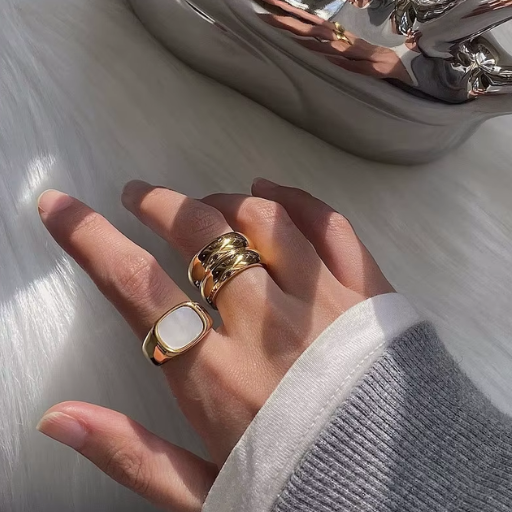
To keep your stainless steel jewelry from fading or tarnishing, keep it dry and avoid prolonged exposure to chlorinated or salty water. It is also advisable to store your jewelry in a low-humidity area in an airtight container or jewelry box with anti-tarnish strips. Cleaning using a gentle, soft cloth will also help remove dirt and oils from the surface without using harsh chemicals. AP Clean cloths are also suitable to use. Using lotions or perfumes shouldn’t be overdone because they can strip off luster from jewelry. Proper care ensures durability and long-lasting shine.
What is the Role of Proper Care and Maintenance?
From my personal experience, Avoid strongly scented lotions to prevent discoloration. Proper care and maintenance help cut down on the time needed to clean tarnishes, scratches, or other damage while increasing the value and figure of sentimental jewelry. Proper storage can go a long way in ensuring the luster and protective elements stay intact.
How to Clean Stainless Steel Jewelry Effectively?
For starters, cleaning stainless steel jewelry is a two-part journey that starts with combining warm dish soap and water. Like getting a warm-up before exercising, allow the jewelry to soak for three to five minutes to loosen any dirt. Use a soft exacting toothbrush to scrub detailed areas, making sure to put in only the required effort so scratching doesn’t become a problem. For the final step, wash the remaining residue using warm water, then remove the water spots with a lint-free cloth.
Tougher stains are no match for a baking soda solution consisting of two parts baking soda against one part of water. Follow the same steps outlined above, applying and rubbing before rinse and drying the jewelry. Remaining delicate is important as harsh tools such as chemicals, abrasive materials, bone dry scrubbers, and peak frequency sound wave cleaners will scratch the jewelry. This approach will help you hold on to the gleam of stainless steel.
Does Gold Plating Help in Retaining Luster?
While the processes of gold plating differ between stainless steel and other metals, the underlying base stainless steel of the jewelry does endure corrosion and tarnishing, which makes it affordable and resilient.In contrast, gold-plated jewelry is prone to corrosion over time. The rate at which the gold layer wears away, the thickness of the baseline gold layer, and the care given to it to maintain its gold finish greatly affect the durability of a gold-plated item.
Is Gold-Plated Stainless Steel Different?
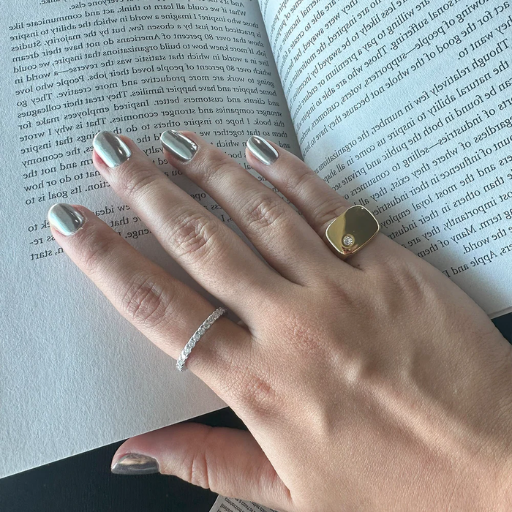
Even though gold plating does help retain luster, the overall gold filling is durable and with optimal care. The longevity of the gold layer, which is measured through harsh chemical exposure and abrasion, and care given through regular wiping can help retain the gold shine. Generally, gold filling thickness is measured in microns, and 2.5 microns tends to be ideal for rather frequently worn pieces, while maintaining a minimal 0.5 microns for dress jewelry is recommended.
What Makes Gold-Plated Stainless Steel Special?
Striking a balance between beauty and functionality, gold-plated stainless steel is notable due to its relatively low cost and durability. The gold layer is usually plated using an electroplating or physical vapor deposition (PVD) technique, which guarantees a seamless and precise coating. When set on stainless steel, the base gold plating makes it resistant to rust, tarnish, and corrosion while also giving it a sleek, contemporary look. This adds a touch of luxury without the hefty price tag of solid gold jewelry.
Technical Parameters:
- Base Material: Due to their value and resistance to corrosion, the most popular choices are 304 or 316L stainless steel.
- Gold Plating Thickness:
- Standard Thickness: Typically ranges from 0.5 to 2.5 microns.
- Higher Durability: Gold plating above 2.5 microns is ideal for pieces that require more extended longevity.
- Gold Purity:
- Generally, the range for plating is between 14k and 24k, with a richer tone of gold being achieved as purity increases.
- Coating Process:
- Electroplating or PVD techniques provide better adhesion of gold to the stainless steel, resulting in more durable jewelry.
Though gold-plated stainless steel does not have an extensive life span compared to solid gold, with gentle care, like protecting the jewelry from hard substances, strong chemicals, and too much water, it will last longer than expected. In addition, this type of jewelry is a fantastic choice for those who prefer style over extreme cost.
Can Gold-Plated Stainless Steel Tarnish?
Over time, gold-plated stainless steel can tarnish. While stainless steel does have a degree of corrosion resistance, the gold-plated layer is more susceptible to wear and tear, especially from frequent use, sweating, or exposure to chemicals. Cleaning it properly, such as not using abrasive substances and washing it gently, can slow tarnishing.
How to Maintain Gold-Plated Jewelry?
My gold-plated jewelry is generally well kept as I do not use water, sweat, perfume, or anything too harsh, as those can weaken the gold layer. After wearing the jewelry, it is stored separately in a soft pouch or lined box to avoid scratches and is brushed softly with a dry cloth to remove any oil. I do not use abrasive cleaners or materials that strip the gold plating. If care is needed, the gold layer on the piece is microns thick, typically for jewelry between 0.5 and 2.5 microns. Keeping track of wear and tear is essential to maintain the piece.
Understanding 316 Stainless Steel and Its Benefits

316 stainless steel has gained popularity in jewelry and various industrial uses due to its exceptional durability and resistance to corrosion. Its most significant advantage is its composition, which contains molybdenum, leading to greater pitting and corrosion resistance, particularly in chloride-rich environments. This grade of steel is hypoallergenic, which protects sensitive skin. In addition, 316 stainless steel requires minimal maintenance while retaining a polished finish. It provides good practical use alongside the aesthetic appeal, making it a reliable option for both decorative items and functional widgets.
What is 316 Stainless Steel?
316 stainless steel is an austenitic chromium-nickel alloy with considerable molybdenum content, which enhances its resistance to pitting and corrosion, particularly in marine and industrial chemical environments. It is well known to be exceptionally durable while withstanding extreme temperatures and being non-magnetic in its annealed state. 316 stainless steel is commonly used in the medical and food processing industries and in marine applications, where it is preferred due to its hygienic, easy-to-clean surface alongside its resistance to common rusting agents, making it both practical and versatile.
How Does 316 Offer Corrosion Resistance?
From my perspective, 316 stainless steel’s resistance to corrosion is primarily attributed to its high molybdenum content, which enhances resistance to pitting and crevice corrosion in chloride-rich environments like seawater and specific industrial locations. Chromium and nickel also passivate an oxide layer on the surface, which oxidizes and corrosively attacks the material. Combining these distinctive factors renders 316 appropriate for harsh chemical and moisture-prone applications.
Is 316 Hypoallergenic?
Indeed, 316 stainless steel is hypoallergenic for the vast majority of individuals. The low carbon content and stable alloy composition (approximately 16-18% chromium, 10-14% nickel, and 2-3% molybdenum), including nickel in low concentrations, dramatically reduces the risk of skin irritation or allergic reactions. The severe nickel leaching passed as a surface in passive oxide layers formed by high chromium content is another metal allergy. Although 316 is much less likely to be allergenic than other stainless steel types, allergic individuals, especially cobalt ones, should always seek medical advice before prolonged use or exposure.
Does Stainless Steel Jewelry Lose Its Luster?
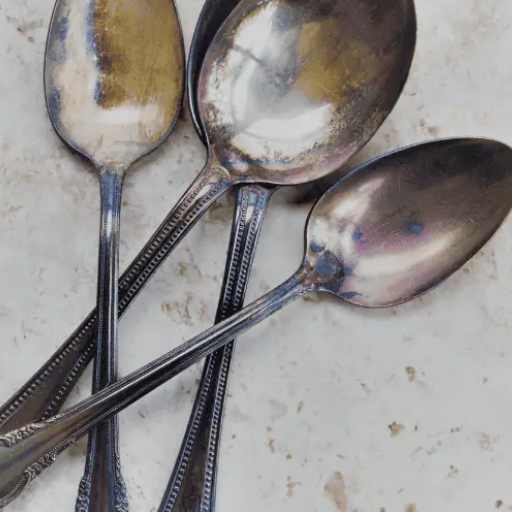
Jewelry made of stainless steel is resistant to corrosion and tarnish, requiring little maintenance to retain its appeal. Chromium creates a protective barrier that inhibits oxidation from occurring. Other metals suffer dullness and oxidation over time, and stainless steel jewelry begins to lose its shine due to dirt, oil, and other harsh conditions. A soft cloth and mild soap make restoring the jewelry to its original look easy.
Why Might Stainless Steel Lose Its Luster?
Although stainless steel is highly resistant to tarnishing and corrosion, it can become dull over time due to the following reasons: contact with rough materials, build-up of oils and grime, and interaction with strong chemicals. For instance, chlorine and saltwater can erode the protective chromium oxide layer over time, resulting in a dull appearance.
Aspects include:
- Chromium Content (16-18%): Guarantees resistance to tarnishing but is prone to weakening with extreme chemical exposure.
- Surface Finish (mirror polish vs brushed steel): Softer treatments show higher dirt masking ability but tend to exhibit scratches more easily.
- Climate Conditions: High humidity or frequent contact with acidic environments may speed up dulling.
With proper care, such as cleaning with non-abrasive solutions and a controlled environment, stainless steel can retain its shine for years.
Can Polishing Restore Shine?
Polishing can restore the shine of stainless steel as long as the right techniques and products are used. The surface can be rejuvenated by removing minor scratches, oxidation, and accumulated grime. Smoothing out imperfections magnifies the reflection of the surface and improves steel’s properties.
There are several methods of polishing stainless steel along with essential factors to look for.
- Using non-abrasive polishing compounds: These polishing agents are tailored specially for stainless steel and will prevent additional damage. For instance, a polishing compound with a fine grit can be great at removing light scratches while not damaging the chromium oxide layer.
- Mechanical polishing: Buffing pads and wheels can be highly effective on heavily dulled or scratch-stained surfaces.
- Chemical polishing: Mild acid-based polishing solutions can remove stains and oxidation. However, they must be rinsed thoroughly, as otherwise they can damage the area.
- Grit level of abrasives: A higher grit of around 1500 – 2000 for minor scratches can be a starting point, as lower grit will be needed for more profound and rougher imperfections.
- Surface finish sensitivity: Those with a polished or mirror finish will also need more attention to avoid swirl marks, so softer polishing tools will need to be used.
- Method of application: Uneven polishing motion and variation in pressure can result in a rough, unpolished surface, which is why consistency is key.
Keeping stainless steel in good condition requires regular cleaning and polishing, enhancing its looks and preserving its luster for many years.
What are the Best Practices to Avoid Discoloration?
First, I try to regularly clean the steel and other surfaces using soft cloths and non-abrasive cleaners for contaminants that can cause staining. I don’t use bleach or chemicals with chloride because these degrade the protective chromium oxide layer. During cleaning, I rinse the surface thoroughly and dry it immediately to avoid water spots or deposits. I also avoid exposing the stainless steel to heat and refrain from prolonged contact with acidic foods or substances, which could lead to discoloration over time. Following these steps ensures that stainless steel maintains its pristine look.
References
- The Pros and Cons of Stainless Steel Jewelry—This article discusses the durability and resistance of stainless steel jewelry to fading and scratches.
- Does Stainless Steel Jewelry Tarnish? – Explains why stainless steel jewelry does not tarnish or rust.
- Is stainless steel a good option for jewelry making? – A discussion on the durability and resistance of stainless steel compared to other metals.
Frequently Asked Questions (FAQ)
Q: Does stainless steel jewelry tarnish or fade?
A: Stainless steel jewelry is known for its resistance to tarnish or fade due to its chromium content, which helps form a protective layer on the stainless steel surface.
Q: Why is stainless steel an excellent choice for jewelry?
A: Stainless steel is a great choice for jewelry because it is a durable metal alloy that is highly resistant to tarnish, rust, and corrosion. This ensures longevity and a lasting shine.
Q: How does chromium in stainless steel prevent tarnishing?
A: The chromium in stainless steel reacts with oxygen to form a thin, invisible layer of chromium oxide, which protects the stainless steel surface and prevents tarnish or rust.
Q: Can stainless steel jewelry change color over time?
A: High-quality stainless steel jewelry typically does not change color over time. However, exposure to harsh chemicals or extreme conditions might affect its appearance.
Q: What are the differences between 304 stainless steel and 316l stainless steel?
A: 304 stainless steel is an alloy with good corrosion resistance, while 316l stainless steel contains molybdenum, offering enhanced resistance to tarnish and rust, especially in marine environments.
Q: Is it safe to wear stainless steel jewelry in water?
A: It is generally safe to wear stainless steel jewelry in water, as it is resistant to tarnish or rust. However, prolonged contact with water, especially chlorinated or salty water, might reduce lifespan.
Q: How should I clean my stainless steel jewelry?
A: To clean stainless steel jewelry, gently wipe it with a soft cloth. For deeper cleaning, use mild soap and water, then dry thoroughly to maintain its shine.
Q: How does stainless steel compare to gold and silver jewelry?
A: Unlike gold and silver, stainless steel jewelry is more affordable, highly durable, and resistant to tarnish or rust, making it a practical choice for everyday wear.
Q: Can stainless steel jewelry cause allergic reactions?
A: Stainless steel jewelry is generally hypoallergenic, but certain types of stainless steel that contain nickel may cause reactions in individuals sensitive to this metal.
Q: Are there any special considerations when buying stainless steel jewelry?
A: When you buy stainless steel jewelry, consider the grades of stainless steel used, such as 304 or 316l, to ensure the best resistance to tarnish and corrosion.





